| Back to Back Issues Page |
 |
|
Bangkok Travelbug May 2016 Tai Yuan Cultural Centre Saraburi April 28, 2016 |
| Hello
Lanna and the Tai Yuan Lanna (a million rice fields), the traditional name for Northern Thailand, consisted of a number of principalities. In 1238, a son was born to the ruler of Chiang Saen*, an old city on the banks of the Mekong. When the ruler of Chiang Saen died in 1259, his son ascended the throne as King Mangrai. *In present day Chiang Rai province King Mangrai prevailed upon the warring principalities to stop fighting among themselves. Through conquest and diplomacy he extended his power by establishing capitals in the region. In 1262 he founded the city of Chiang Rai and made it his capital. Later in 1292 he established another capital in Chiang Mai. Under the reign of King Mangrai, Lanna reached the peak of his power and a common identity was forged among the various Tai peoples in the north who became known as Tai Yuan or northern Tai. The Tai Yuan had their own language, Kam Muang using the Lanna script which is also used by the Tai Lue, Khun and Lao Tham (Old Lao) languages. Here’s a sample of the Lanna script from the signboard to the cultural centre. 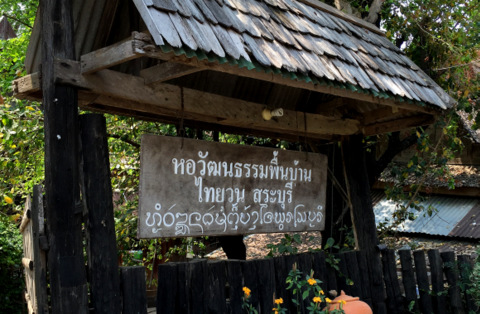
The top two lines are in Thai, the last is in the Lanna script 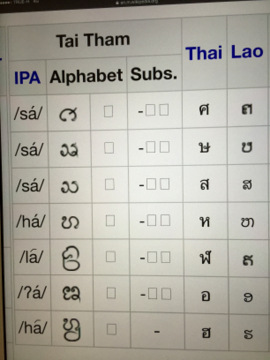
The Lanna script and its equivalent in Thai and Lao After the death of King Mangrai in 1317, Lanna was plagued by internal conflict and wars with her neighbours. In 1558, Chiang Mai was captured by the Burmese and became a Burmese vassal. It was only in 1775 in the reign of King Taksin that Chiang Mai was retaken from the Burmese. In the reign of King Rama I (1782 – 1809), Chiang Saen, the last Burmese toehold in Lanna was destroyed. With the destruction of Chiang Saen, the Tai Yuan fled south to other cities in Lanna. Some however went further south, 800 km to the south on the banks of the Pasak River in Saraburi. Contents The Tai Yuan in Saraburi Today there are about 80,000 Tai Yuan in Saraburi, most of whom have settled in Sao Hai district where the shrine dedicated to the spirit of the crying pillar and the Ban Ton Tan Floating Market are located. The heritage of the Tai Yuan community in Saraburi is preserved in the Tai Yuan Cultural Centre in a traditional building complex, the brainchild of Ajarn Songchai Wannakul, a retired university lecturer. Ajarn Songchai is a man who loves the traditional way of life and traditional houses. He lives in one himself; his home is just across the road from the cultural centre he set up to serve as a centre for preserving the Tai Yuan heritage. The Tai Yuan Cultural Centre consists of a number of traditional houses more than 100 years old. These houses were dismantled and transported from various parts of the country, to be reconstructed and joined to become a new structure. The centre is built along the slopes of the Pasak River bank and some of the buildings are floating in the river. Here’s an overview of the place to give you an idea. 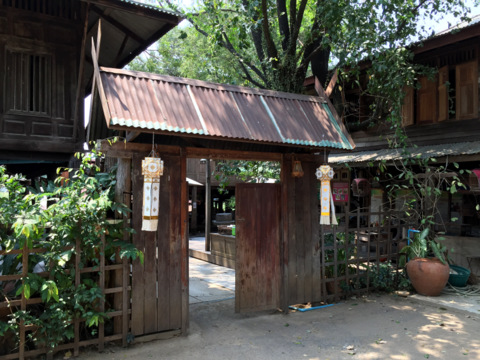
Entrance to the cultural centre 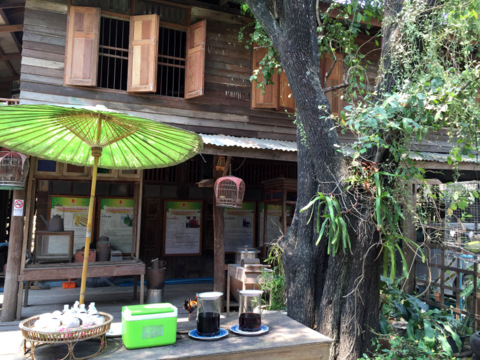
Building immediately after the entrance 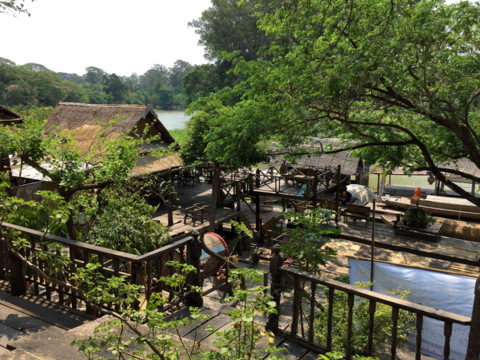
View from the top – note the slope down to the river to the top of the photo 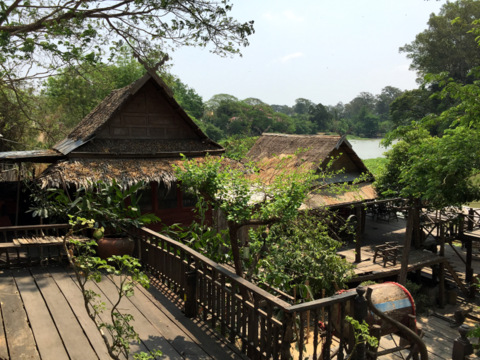
Building with the V shaped kalae at the apex of the gable, a characteristic of Lanna houses Some of the houses are on rafts floating on the river where there is also a museum for old boats. 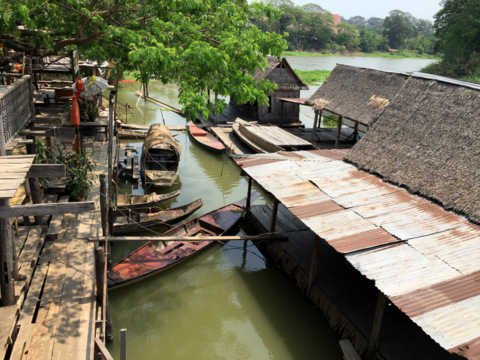
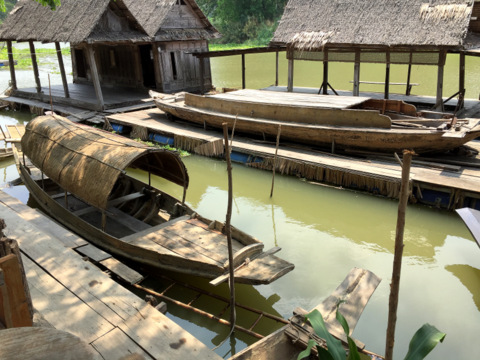
Houses on rafts and boat museum The terraced structure along the slope provides a stage for performance and an open area below where the audience can watch the show and dine at the same time. 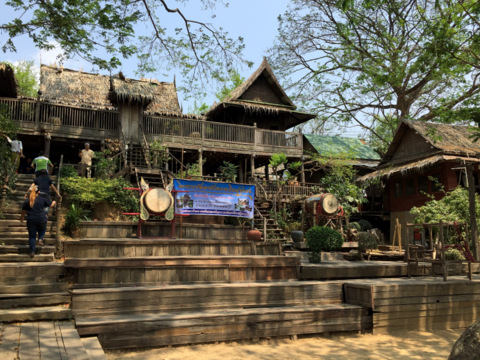
View from below Some of the visitors were having a traditional Lanna meal, kantok together. 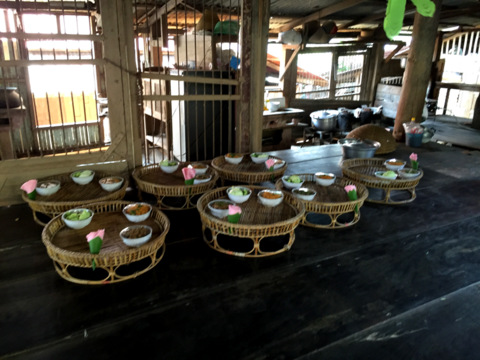
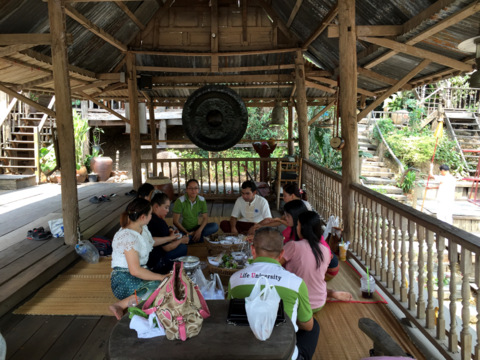
Lanna kantok Contents Cultural activities To preserve the cultural heritage of the Tai Yuan, traditional dance classes are conducted every weekend at the cultural centre. On special occasions, the students get to display their skills. We were lucky; the day of our visit was such an occasion. A group of students from a local university were doing a study project on Tai Yuan culture and they were invited as guests for a cultural performance and lunch. They were in for a stunning display! Here’s a preview of that performance. 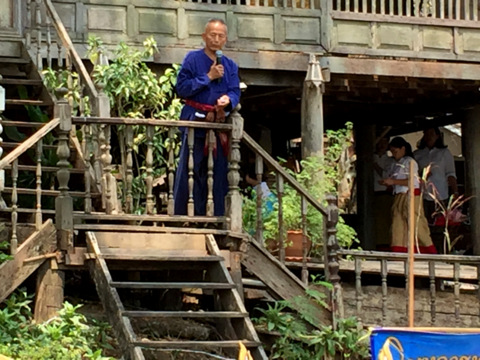
Ajarn Songchai bid the visitors welcome The sounding of drums and gongs signalled the start of the performance. 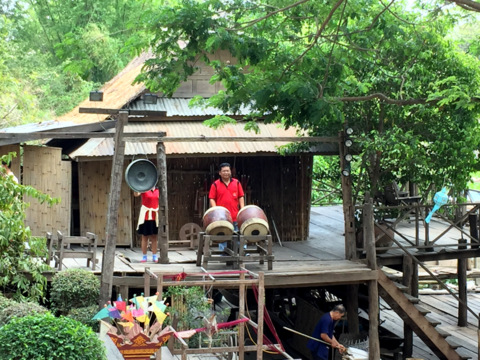
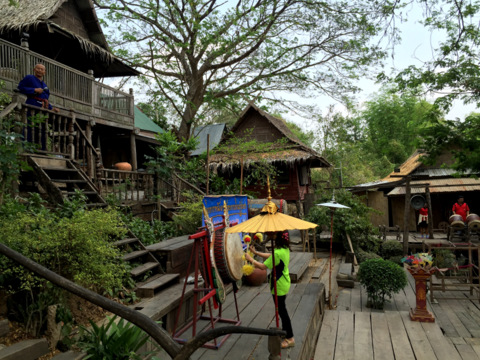
The start of the performance The dancers glided gracefully down the stairs followed by servers carrying trays of the food for the guests below. 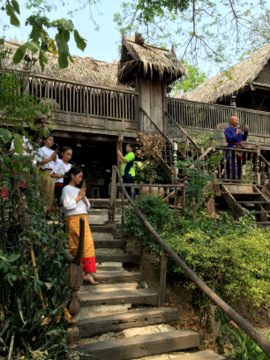
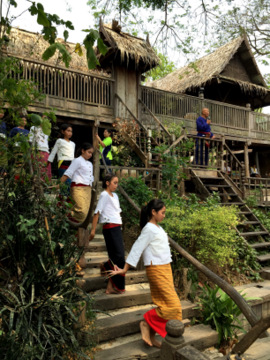
Grand entrance by the dancers and the food servers 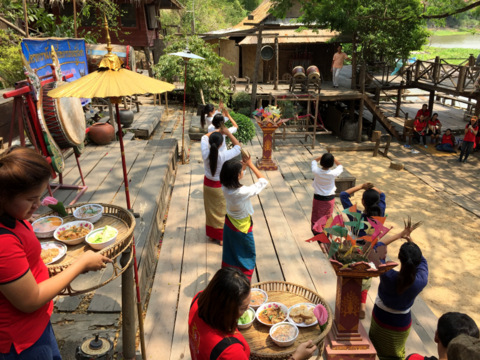
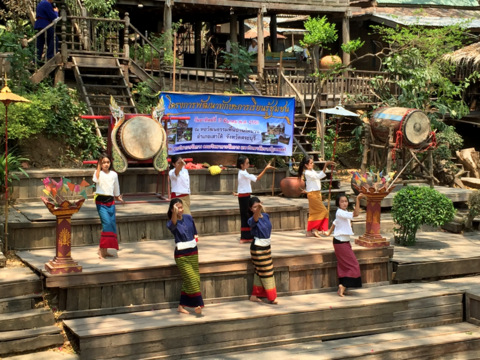
A beautiful performance The guests seated on the floor on the lower tier had a grandstand view of the performance. 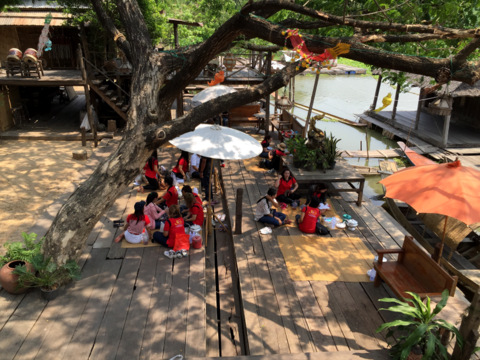
Relaxing in the shade Here’s a short video clip of the cultural dance. If you can view the video, click on this link Our compliments of the dancers for a wonderful show! May they continue to preserve the cultural heritage of their community. With that we end of tour of the Tai Yuan Cultural Centre in Saraburi. I’m glad I found this place which gave me an insight into the Lanna and Tai Yuan history and culture. 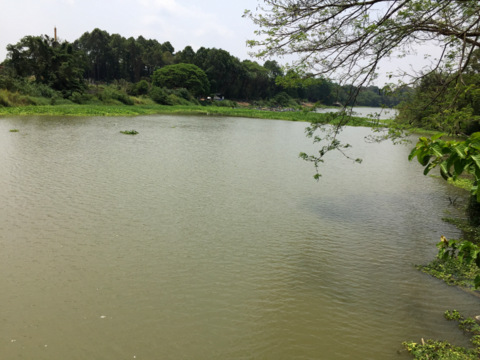
Scenic Pasak River viewed from the Tai Yuan Cultural Centre Contents My thanks I am grateful to Ajarn Songchai Wannakul for his hospitality and information imparted during our visit to the Tai Yuan Cultural Centre and would like to thank him for a good learning experience. 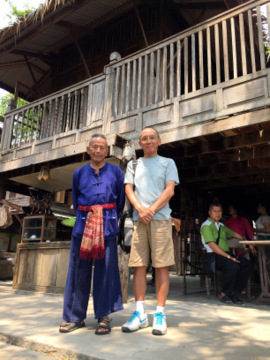
Ajarn Songchai with the author Contents Map to the Tai Yuan Cultural Centre If the map doesn’t appear, click on this link How to get there By car From Bangkok - Vibhawadi Rangsit Road - past Don Mueang Airport - Highway 1 – Saraburi – turn left into Highway 3048 Turn left at Wat Pho – head south – turn left to route 3050 – continue on till you reach Wat Ton Tan, where the Ban Ton Tan Floating Market is located. Drive past the market and continue for another km on route 3050 till you reach the Tai Yuan Cultural Centre. Admission is free Opening times Please call to make an appointment for a visit. Contact Information Address Tai Yuan Cultural Centre Amphur Sao Hai Saraburi Thailand Telephone: Ajarn Songchai - 087 122 8087 Contents Next month Exploring Muak Lek, Saraburi If you enjoyed reading this e-zine, please forward it to a friend. If you received this from a friend and found it interesting, please subscribe at Bangkok Travelbug. What do you think of the Bangkok Travelbug? We love to hear from you What other subscribers have said Till next month then. Eric Lim Tour Bangkok Legacies Find us on Facebook If you are an independent traveller, here's a handy e-guide book, Tour Bangkok Legacies, which will help you along as you explore the streets of Bangkok and discover its old treasures. It's complete with historical descriptions, maps and detailed directions on how to get to these places. My Kindle e-book 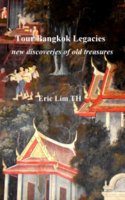
Copyright@2008-2016 Tour Bangkok Legacies All rights reserved |
| Back to Back Issues Page |